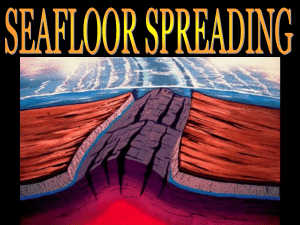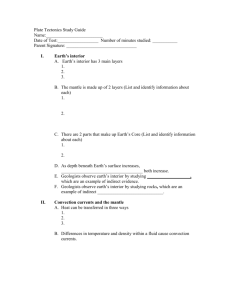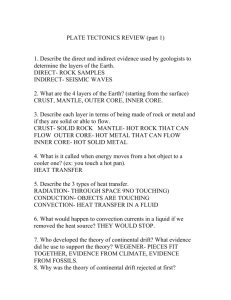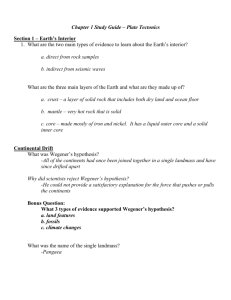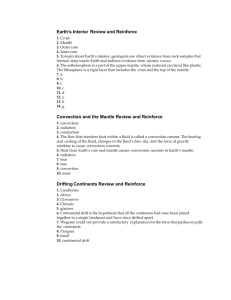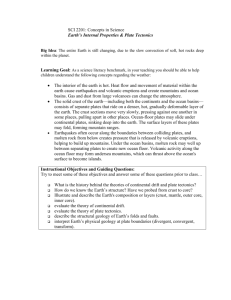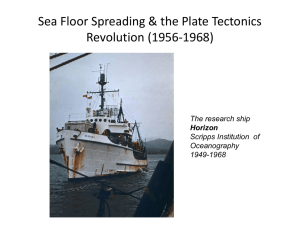plate-tectonics-study-guide-2012-answers
advertisement
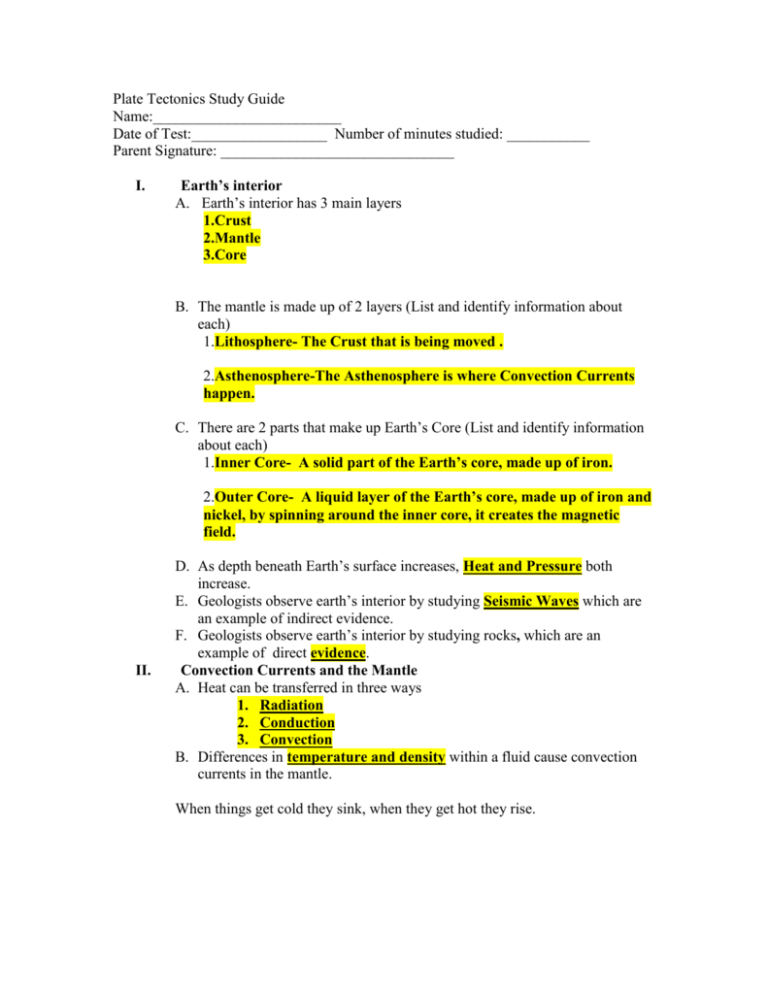
Plate Tectonics Study Guide Name:_________________________ Date of Test:__________________ Number of minutes studied: ___________ Parent Signature: _______________________________ I. Earth’s interior A. Earth’s interior has 3 main layers 1.Crust 2.Mantle 3.Core B. The mantle is made up of 2 layers (List and identify information about each) 1.Lithosphere- The Crust that is being moved . 2.Asthenosphere-The Asthenosphere is where Convection Currents happen. C. There are 2 parts that make up Earth’s Core (List and identify information about each) 1.Inner Core- A solid part of the Earth’s core, made up of iron. 2.Outer Core- A liquid layer of the Earth’s core, made up of iron and nickel, by spinning around the inner core, it creates the magnetic field. II. D. As depth beneath Earth’s surface increases, Heat and Pressure both increase. E. Geologists observe earth’s interior by studying Seismic Waves which are an example of indirect evidence. F. Geologists observe earth’s interior by studying rocks, which are an example of direct evidence. Convection Currents and the Mantle A. Heat can be transferred in three ways 1. Radiation 2. Conduction 3. Convection B. Differences in temperature and density within a fluid cause convection currents in the mantle. When things get cold they sink, when they get hot they rise. III. Drifting continents A. Alfred Wegner developed the idea that the continents were once joined together as a super-continent called Pangea and have since drifted apart. B. Most scientists rejected Wegener’s theory because he could not identify a force that could move the continents. C. Continental drift occurs because of seafloor spreading. IV. V. Sea Floor Spreading In sea floor spreading, molten ma forms new rock along the midA. Ocean ridges, which was mapped by Sonar technology was used to map the ocean floor B. In Subduction , the ocean floor sinks back to the mantle beneath the deep ocean trenches. C. Molten material erupts at the mid-ocean ridge during sea floor spreading. D. The age of rock far away from the mid-ocean ridge was determined by drill samples of the rocks E. Mid- ocean ridges are located in all/every ocean(s) F. The youngest rocks on the ocean floor are located at Middle of the mid ocean ridge VI. The theory of plate tectonics A. Plates slip past each other at transform boundaries, move apart at divergent boundaries and come together at convergent boundaries; the movement is caused by convection currents in the asthenosphere. B. Subduction is where one plate goes under another plate C. Old ocean crust is more dense because it is colder. D. The plates move because of convection currents in the asthenosphere. E. Mountains result from two pieces of continental crust colliding F. The place where two plates come together is a convergent plate boundary G. When continental plates pull apart a rift valley forms. H. Earthquakes produce seismic waves that travel through the Earth, and geologists study these to “see” into the Earth I. Where two of Earth’s plates slip past each other moving in opposite directions is called a transform boundary. J. Rock that makes up oceanic crust basalt. Words to Know for Plate Tectonics Continental Drift Pangaea Seafloor Spreading Plate Tectonics Convection Current Divergent Boundaries Convergent Boundaries Transform Boundaries Mid-Ocean Ridges Subduction Rifting Magma Volcanoes Earthquakes Fossils
